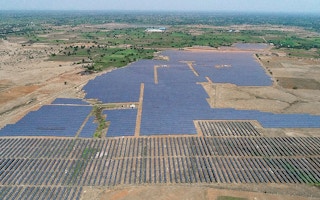Here’s the bad news. Unless India opts for a totally new energy policy, a revolutionary switch to a clean future, the world has no chance of avoiding dangerous climate change.
But there’s some much better news too: with the right policies, it can both improve the lives of its own citizens and offer the entire planet hope of a livable climate.
That is the view of the International Energy Agency (IEA), which says that as it is the world’s third largest consumer of energy after China and the United States, the direction India takes is crucial to everyone’s future.
In a report, India Energy Outlook 2021, the Agency says the country’s energy use has doubled in the last 20 years, with 80 per cent of the energy consumed still coming from coal, oil and wood.
Despite this growth, India’s emissions per capita are still only half the world average. But this is set to change. Economic growth is expected to accelerate dramatically, and the rate of energy demand growth is already three times the global average.
Millions of Indian households are expected to buy new domestic appliances, air conditioning units and vehicles. Increasing urbanisation means four million people need new urban homes annually, requiring a city the size of Los Angeles to be built every year.
To meet this growth in electricity demand over the next twenty years, India will also need to add a power system the size of the whole European Union to what it already has, the IEA says.
The report describes the huge developments taking place in what is soon to overtake China as the world’s most populous country and explains how this growth can be achieved without destroying the planet in the process. The IEA has just entered what it calls “a strategic partnership” with India to help it towards a clean energy transition.
Huge opportunity
Dr Fatih Birol, the IEA’s executive director, admitted it was a daunting task: “The stakes could not be higher, for India and for the world. All roads to successful global clean energy transitions go via India.
“What our new report makes clear is the tremendous opportunity for India to successfully meet the aspirations of its citizens without following the high-carbon pathway that other economies have pursued in the past.”
The report agrees. Transformations in the energy sector – on a scale no country has achieved in history – require huge advances in innovation, strong partnerships and vast amounts of capital.
The extra funding for the clean energy technologies required to put India on a sustainable path over the next 20 years is US$1.4 trillion (£1tn), or 70 per cent higher than in a scenario based on its current policy settings. But the benefits are huge, including savings of the same magnitude on oil import bills, the IEA calculates.
Solar’s bright future
At present the Indian government’s projected 50 per cent rise in greenhouse gas emissions by 2040 is enough to offset entirely the projected fall in emissions in Europe over the same period.
The Agency says these high emissions can be avoided. Although solar energy accounts for less than 4 per cent of India’s electricity generation at the moment, and coal 70 per cent, this will change: “Solar power is set for explosive growth, matching coal’s share in the Indian power generation mix within two decades.”
Even so, the government is not going far or fast enough. The scope for rooftop solar panels, solar thermal heating and pumps for irrigation and drinking water is very great.
Transport is another problem area. “An extra 25 million trucks will be travelling on India’s roads by 2040 as road freight activity triples, and a total of 300 million vehicles of all types are added to India’s fleet between now and then,” the report says.
Health will improve
India has many good policies to reduce the effect of this by electrifying rail routes and vehicles. But even so, without more policy improvements, its demand for oil is set to increase more than any other country’s.
Perhaps the most difficult area to control emissions is in the construction sector, with cement and steel production heavily dependent on fossil fuels. Ways to use electricity made with renewables for manufacturing rather than fossil fuels must be found.
There is also a need to replace and improve cooking stoves using gas and electricity instead of firewood and other traditional fuels, like animal dung.
The report makes the point that all the moves to reduce greenhouse gas emissions also help the country’s balance of payments and security by substituting home-produced renewables for fossil fuel imports. This cuts air pollution as well and improves people’s health, further improving economic output.
This story was published with permission from Climate News Network.










